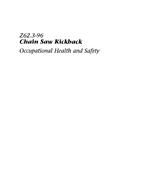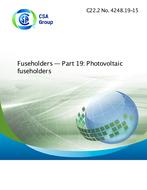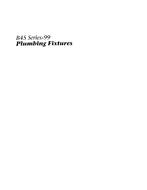Preface
This is the first edition of CSA B354.12, Design, calculations, safety requirements, and test methods for mast climbing transport platforms (MCTPs). With respect to design and manufacturing criteria, this Standard is closely harmonized with the equivalent ANSI A92.10, Elevating work platforms – Mast-climbing transport platforms.
Scope
1.1 General This Standard applies to mast-climbing transport platforms (MCTPs) that are considered tools of the trade and are used to vertically transport material and authorized persons to specified access levels on a structure during construction, renovation, maintenance, and related activities. The platform operates at a limited speed and minimum safe distance from the structure. This Standard is to provide requirements for the design, manufacturing, remanufacturing, rebuilding/ reconditioning, and testing criteria for mast-climbing transport platforms. This Standard specifies particular safety requirements for mast climbing transport platforms (MCTP). This Standard is applicable to transport platforms with a combination of the following: a) one or more masts; b) masts that are tied or untied; c) masts of fixed or variable length; d) masts that are vertical or inclined between 0? and 30? to the vertical; e) masts which are standing or hanging; f) platforms with a movable or static base (chassis or base frame); g) platforms with a mechanical drive system using rack and pinion, screw drive, or ratchet drive; h) platforms that are driven using electric, hydraulic, or internal combustion engines; and i) platforms that have an elevating mechanism that is manually or power operated. Raising and lowering speeds are limited to a maximum of 0.20 m/s (0.8 ft/s). 1.2 Purpose The purpose of this Standard is to specify the minimum requirements for the establishment of criteria for the design, manufacture, remanufacture, rebuild/recondition, testing, and performance in order to achieve the following objectives: a) assist in the prevention of personal injuries and accidents; b) uniformity in ratings; and c) understanding by manufacturers, dealers, installers, maintenance personnel, operators, owners, and users of their respective responsibilities. Note: Transport platforms are generally intended to be set up on level surfaces. Normally, they are not insulated for use near electrically energized circuits, nor are they intended to be used in hazardous locations. The operation of any transport platform is subject to certain hazards that can only be protected against by a competent person trained in the intended use, safe operation, maintenance, and service of this type of equipment. Also, the provisions of this Standard are not intended to prevent the use of systems, methods, or devices of equivalent or superior quality, strength, fire resistance, effectiveness, durability, and safety to those prescribed by this Standard, provided that there is technical documentation to demonstrate the equivalency of the system, method, or device. Note: Authorities having jurisdiction might permit variations to this Standard provided that technical documentation or physical performance verification can assure the safety equivalence of such modifications to the corresponding requirements of this Standard. 1.3 Application This Standard should be used to guide a qualified designer for MCTPs manufactured after the date of publication. This Standard identifies the hazards arising during the various phases in the life of such equipment and describes the methods for elimination or reduction of these hazards. This Standard does not specify the requirements for dealing with the hazards involved in the maneuvering, erecting or dismantling, fixing, or removing of any materials which are not part of the MCTP. It also does not deal with the handling of specific hazardous materials. 1.4 Equipment not covered This Standard does not apply to a) mast climbing work platforms in accordance with CAN/CSA-B354.5; b) goods hoists in accordance with CSA Z256; c) passenger/goods hoists in accordance with CSA Z185; d) mobile elevating work platforms in accordance with CSA B354.6, B354.7, and B354.8; e) mobile cranes such as those covered in CSA Z150; f) permanently installed (non-mobile) elevating lifts used to transport personnel between different elevations; and g) firefighting equipment. 1.5 Terminology In this Standard, “shall” is used to express a requirement, i.e., a provision that the user is obliged to satisfy in order to comply with the standard; “should” is used to express a recommendation or that which is advised but not required; and “may” is used to express an option or that which is permissible within the limits of the Standard. Notes accompanying clauses do not include requirements or alternative requirements; the purpose of a note accompanying a clause is to separate from the text explanatory or informative material. Notes to tables and figures are considered part of the table or figure and may be written as requirements. Annexes are designated normative (mandatory) or informative (non-mandatory) to define their application. 1.6 Measurement The values given in SI units are the units of record for the purposes of this Standard. The values given in parentheses are for information and comparison only.
Product Details
- Edition:
- 1st
- Published:
- 05/01/2017
- ISBN(s):
- 9781488306693
- Number of Pages:
- 74
- File Size:
- 1 file , 1.8 MB
- Product Code(s):
- 2425014, 2425514, 2425014, 2425014


